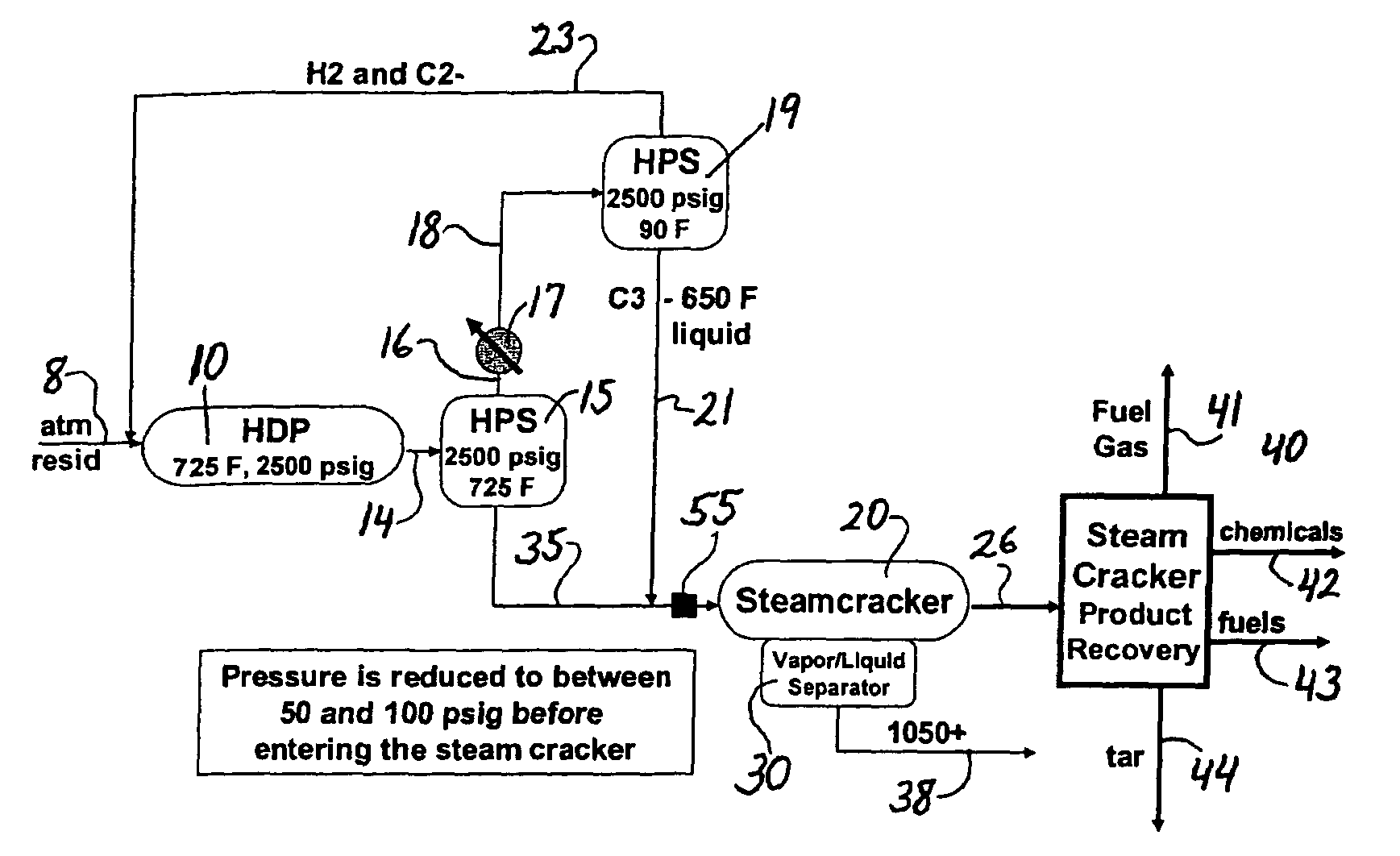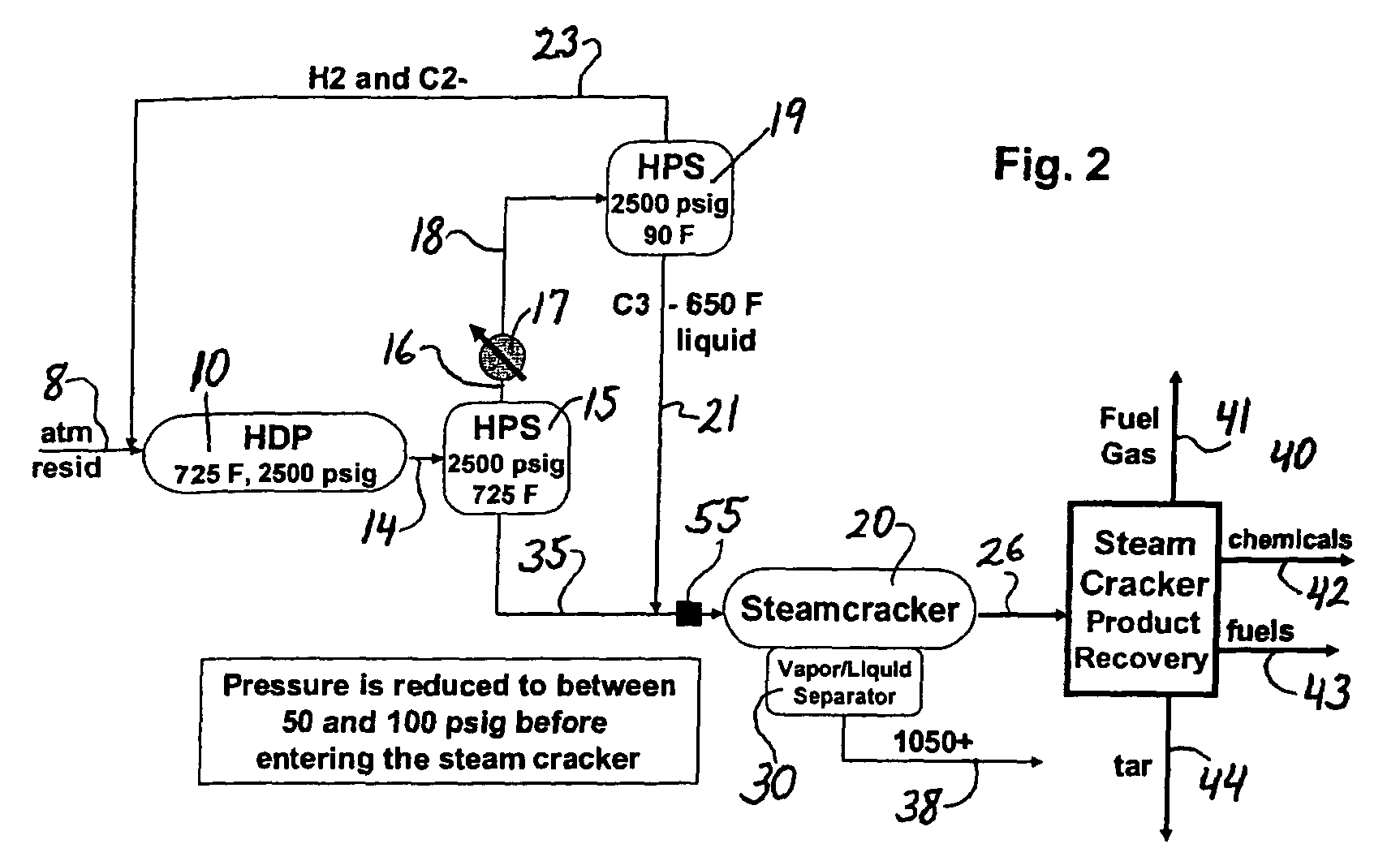Resid processing for steam cracker feed and catalytic cracking
a technology catalytic cracking, which is applied in the field of making olefins, can solve the problems of substantial (and expensive) processing of the starting feedstock of a conventional olefin production plant, patents that do not adequately teach steam cracking hydrocarbon streams, and achieve the effects of reducing the hydrogen content of steam cracker feed, and reducing the cost of production
- Summary
- Abstract
- Description
- Claims
- Application Information
AI Technical Summary
Benefits of technology
Problems solved by technology
Method used
Image
Examples
Embodiment Construction
[0031]In one embodiment, the resid-containing, incipient thermally cracked effluent from a hydroprocessor, preferably a resid hydroprocessor, including those resid fractions having a boiling point of less than about 1050° F. (about 566° C.) and preferably those resid fractions having a boiling point of less than about 1100° F. (about 593° C.), are further cracked substantially, such as in a visbreaker / separator, and used as feed for a steam cracker or other thermal pyrolysis unit. In the pyrolysis unit, the vaporized fractions are converted to desired products including olefins. The terms thermal pyrolysis unit, pyrolysis unit, steam cracker, and steamcracker are used synonymously herein; all refer to what is conventionally known as a steam cracker, even though steam is optional.
[0032]According to the invention a crude or fraction thereof containing resid is hydroprocessed. Typically, resid hydroprocessing according to the present invention may be carried out at a temperature of at ...
PUM
| Property | Measurement | Unit |
|---|---|---|
| temperature | aaaaa | aaaaa |
| temperature | aaaaa | aaaaa |
| temperature | aaaaa | aaaaa |
Abstract
Description
Claims
Application Information
 Login to View More
Login to View More - R&D
- Intellectual Property
- Life Sciences
- Materials
- Tech Scout
- Unparalleled Data Quality
- Higher Quality Content
- 60% Fewer Hallucinations
Browse by: Latest US Patents, China's latest patents, Technical Efficacy Thesaurus, Application Domain, Technology Topic, Popular Technical Reports.
© 2025 PatSnap. All rights reserved.Legal|Privacy policy|Modern Slavery Act Transparency Statement|Sitemap|About US| Contact US: help@patsnap.com



